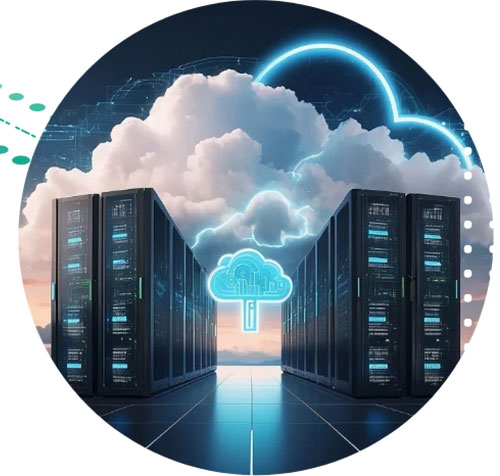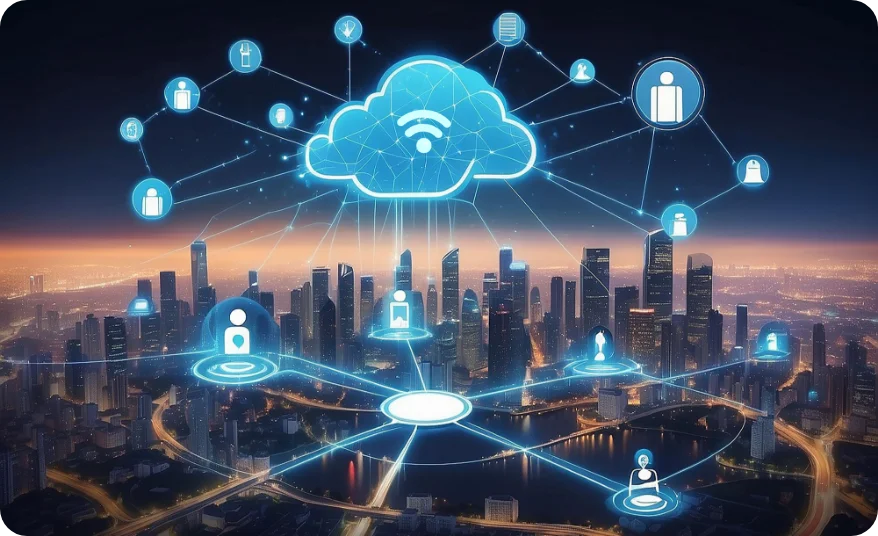Table of contents
Table of content
- Advantages of App Modernization
- Challenges in App Modernization
- Key strategies for App Modernization, Tools, and Technologies
- App Modernization Process
- Sify’s App Modernization Services
- Frequently Asked Questions
App modernization is the process of updating and transforming legacy applications to meet current business needs by leveraging modern technologies, architectures, and frameworks. It involves improving the performance, security, and scalability of applications while integrating them with cloud solutions or microservices. App modernization helps businesses stay competitive by enhancing user experiences and optimizing operational efficiency.
App modernization benefits are many, these include boosting innovation and providing a competitive edge through faster releases and cost reductions. It creates a strong foundation for agile growth, improving efficiency, scalability, and time-to-market. Additionally, app modernization enhances performance, security, and user experience, leading to improved customer loyalty and business success.
Challenges in app modernization include the complexity of modernizing legacy systems due to a lack of documentation and intricate interdependencies, making risk evaluation difficult. Ensuring compatibility across technologies while maintaining data integrity and functionality during migration is another challenge. Additionally, resistance to change from stakeholders and budgetary constraints for technology upgrades, training, and operational disruptions can hinder smooth app modernization initiatives.
Today, enterprises need to shift from legacy systems and architecture to new-age applications that are critical to introducing new business models, accelerating time-to-market and providing much-needed agility.
This is where the systematic approach of application or app modernization comes to the rescue. App modernization is a strategic approach that overcomes the difficulties faced in legacy system modernization. It aims to revitalize applications by introducing parameters like agility, responsiveness, adaptability, scalability, and resilience.
Let us understand app modernization in detail:
Advantages of App Modernization
App modernization is more than just updating technology. It is a strategic move that enables businesses to stay competitive in an ever-evolving market. By streamlining development and operations, organizations can accelerate innovation and efficiency across the board.
Here are the key advantages of modernizing your apps:
- Boosting innovation and providing a competitive edge: App modernization brings numerous benefits to business operations, with innovation being one of them. Bringing development, security, testing, cloud, and operations on a single platform enables faster releases through fully automated DevSecOps pipelines, from concept to cash, for products and services. It also brings significant competitive advantages. Companies like Sify report more than 30% cost reductions, in addition to increased productivity and numerous other benefits for their clients.
- Foundation for agile growth and efficiency: App modernization creates a stronger foundation for new and ongoing technology enhancements, including quicker adaptation to current and evolving business needs. Facilitated by technologies like cloud, DevOps, microservices, containerization and continuous integration and continuous delivery/continuous deployment (CI/CD), modern applications run more efficiently, reducing operating expenses and increasing efficiency and scalability in responding to shifting market conditions and enterprise needs. Faster time-to-market is achieved, often with an accelerated feature velocity of up to 40%.
- Enhancing performance, security, and user experience: Furthermore, the cloud platform supports anytime updates, the creation of new business models, and the introduction of new or improved features. App modernization generates better performance and superior user experience, driving customer loyalty and accelerating business success. Another key benefit is advanced security, better governance, and full compliance with the laws of the land.
Challenges in App Modernization
Despite multiple advantages, there are challenges in app modernization of which enterprises must be aware, and therefore must stay prepared:
- Legacy system modernization often becomes complex due to a lack of documentation and multiple intricate interdependencies, thus making it hard to evaluate risks and plan robustly.
- Achieving compatibility across all technologies while preserving data integrity, functionality, and seamless portability is particularly challenging during the migration phase of the process.
- Another frequently encountered challenge within an enterprise is the resistance to change from stakeholders. This is because employees become accustomed to existing systems.
- Budgetary constraints on investment related to development, testing, deployment of new technologies, infrastructure upgrades, operational disruptions, and training make it difficult to drive app modernization initiatives smoothly.
Understanding and overcoming these issues requires a well-crafted strategy with careful planning from top to granular levels, effective change management, open communication, deeper stakeholder engagement strategies, and collaboration across business and IT departments.
Key Strategies for App Modernization, Tools, and Technologies
Today, app modernization has become an integral feature of an enterprise’s overall digital transformation strategy. Research has projected that these services will grow to nearly US $32.8 billion by 2027.
It is important to orchestrate a long-term app modernization roadmap to manage an enterprise’s resources effectively. The roadmap details a systematic and comprehensive analysis of the application’s technical attributes and their relations and interdependencies with other applications and systems, the overall application’s fitness for cloud migration, and the expected ROI of such a modernization program, among other criteria.
The successful execution of app modernization initiatives requires the implementation of robust strategies and thoroughly tested approaches, sustained by specialized tools and technologies.
Application modernization patterns
The following approaches and patterns can be considered for application modernization:
- Refactoring: The aim of refactoring is to improve efficiency, enable on-demand, real-time scalability, and ease of maintainability without changing the application’s fundamental functionality. Here, precedence is given to speed and productivity. The underlying principle of this approach is to augment the application code with the least code changes required.
- Rewriting: The rebuilding or rewriting approach entails the work of reconstructing an application right from scratch to get the best cloud performance. This approach aims to make the most of the cloud or cloud-native features and on-demand scalability.
- Container orchestration: This approach is essential in aiding in the deployment of the same application across different infrastructure and environments without the need for redesigning it. Leading containerization platforms present a simple and efficient mechanism to create and deploy containers and lifecycle management.
- Microservices architecture: Microservices involve breaking down monolithic applications into smaller, loosely coupled independent services that communicate through APIs to enhance modularity and facilitate easier updates, agility, scalability, and resilience.
- Cloud migration: This strategy entails transitioning existing applications from on-premises environments to cloud platforms like Oracle, GCP, AWS or Azure. Enterprises that wish to leverage benefits such as elasticity and global scalability with improved accessibility and cost-efficiency could consider cloud-native applications, as these are specially designed to channel cloud resources optimally.
- DevOps and DevSecOps: These methodologies are essential to the app modernization journey as they enable digital product engineering for the automation of repetitive tasks. By incorporating security into the process, DevSecOps essentially helps in the implementation of integrated governance and compliance solutions.
- The API-first strategy: This approach entails using APIs as the key components in the software development process to achieve faster integration. The prime focus of this approach is on the design and documentation to create applications that are truly integrated, reusable, and interoperable.
- Tools and technologies: Without the utilization of various tools and technologies, it is impossible to achieve business transformation. They enable CI/CD pipelines, automating various software development, testing, and deployment stages, as well as continuous monitoring of user behavior and log analysis to provide valuable insight for improvements.
App Modernization Process
App modernization is a multi-staged process and typically involves the following steps:
- Assessment and planning: The process begins with assessment and planning, with an audit of the current IT infrastructure. This stage involves evaluating existing applications for issues with integration, compatibility, and relevance. It helps to set a clear roadmap, identify modernization opportunities, prioritize workloads, and define goals.
- Designing contemporary architecture: The next task is to design a contemporary architecture that meets the desired business and technical requirements for the present and future. This is the time to choose the best-fit strategies and techniques that combine microservices, cloud-native principles, API integration, and so on.
- Implementation and testing: After design comes implementation and testing, where the SMEs responsible for the execution of modernization strategies (refactoring, containerization, cloud migration, etc.) make sure that they adhere to industry best practices, follow coding standards, security guidelines, and proper documentation. Development and testing go hand-in-hand with the implementation of DevOps practices, enabled by automation, to ensure that the software produced is bug-free.
- Testing and validation: Post-implementation comes the rigorous testing and validation stage. This helps ensure that app functionalities and compatibility with other systems are not compromised, their performance is as expected, and security standards are met.
- Deployment and monitoring: The final stage is the deployment of modernized applications into production environments. This is iterative in nature. Teams must carry out critical activities, such as monitoring performance metrics, user feedback, checking system health regularly, and evaluating evolving business requirements.
Sify’s App Modernization Services
Sify’s expertise in App Modernization Services underscores its commitment to enabling organizations to navigate their digital transformation successfully. Our unique service offerings such as Kubernetes-as-a-Service,DevSecOps, and Site Reliability Engineering ensure quicker time-to-value with enhanced visibility, control, business continuity, and customer satisfaction.
Enterprises undergoing business and digital transformation must understand that app modernization is not merely about updating technology. It is a strategic imperative that aims to enhance operational efficiency, reduce spending and speed up innovation while future-proofing businesses. It plays an instrumental role in aligning IT capabilities with strategic goals. Our comprehensive App Modernization Services are designed to deliver cost optimizations with increased productivity and spend reductions.
Contact us to learn how to achieve unmatched agility and faster time to market through legacy application modernization.
FAQs
Application modernization is important because it allows enterprises to update legacy systems, improve efficiency, reduce costs, and enable agility, security, and technology adoption to stay competitive.
A good example of application modernization is migrating a monolithic legacy application to a cloud-native, microservices architecture to improve scalability, agility, and operational efficiency.
Key strategies for application modernization include refactoring and rewriting code, microservices architecture, integration with DevOps practices, leveraging containerization technologies, cloud migration, embracing an API-first approach, and utilizing automated CI/CD pipelines.































































